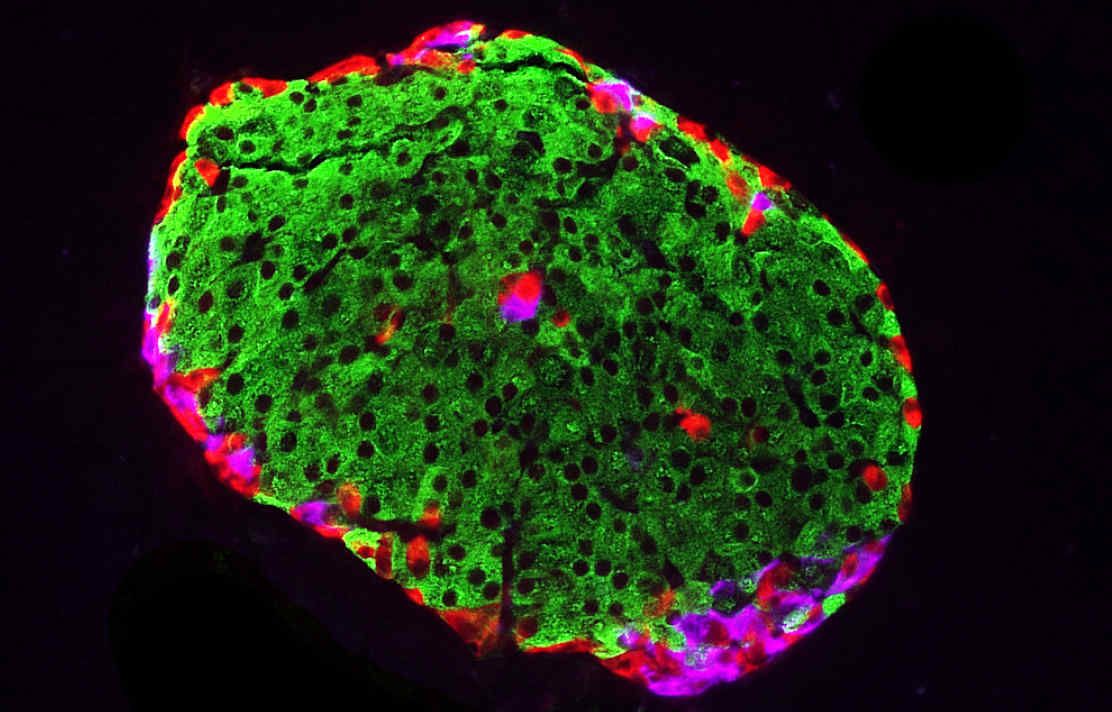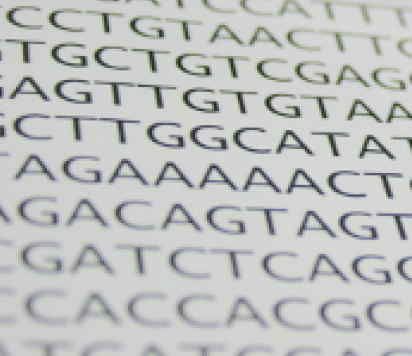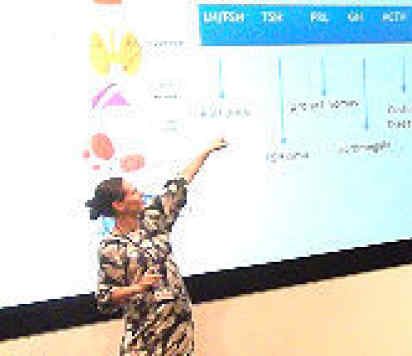Results
- Showing results for:
- Reset all filters
Search results
-
Journal articleShaw-Smith C, De Franco E, Allen HL, et al., 2014,
GATA4 Mutations Are a Cause of Neonatal and Childhood-Onset Diabetes
, Diabetes, Vol: 63, Pages: 2888-2894, ISSN: 0012-1797The GATA family zinc finger transcription factors GATA4 and GATA6 are known to play important roles in the development of the pancreas. In mice, both Gata4 and Gata6 are required for pancreatic development. In humans, GATA6 haploinsufficiency can cause pancreatic agenesis and heart defects. Congenital heart defects also are common in patients with GATA4 mutations and deletions, but the role of GATA4 in the developing human pancreas is unproven. We report five patients with deletions (n = 4) or mutations of the GATA4 gene who have diabetes and a variable exocrine phenotype. In four cases, diabetes presented in the neonatal period (age at diagnosis 1–7 days). A de novo GATA4 missense mutation (p.N273K) was identified in a patient with complete absence of the pancreas confirmed at postmortem. This mutation affects a highly conserved residue located in the second zinc finger domain of the GATA4 protein. In vitro studies showed reduced DNA binding and transactivational activity of the mutant protein. We show that GATA4 mutations/deletions are a cause of neonatal or childhood-onset diabetes with or without exocrine insufficiency. These results confirm a role for GATA4 in normal development of the human pancreas.
-
Journal articlevon Figura G, Fukuda A, Roy N, et al., 2014,
The chromatin regulator Brg1 suppresses formation of intraductal papillary mucinous neoplasm and pancreatic ductal adenocarcinoma
, Nature Cell Biology, Vol: 16, Pages: 255-267, ISSN: 1476-4679Pancreatic ductal adenocarcinoma (PDA) develops through distinct precursor lesions, including pancreatic intraepithelial neoplasia (PanIN) and intraductal papillary mucinous neoplasia (IPMN). However, genetic features resulting in IPMN-associated PDA (IPMN–PDA) versus PanIN-associated PDA (PanIN-PDA) are largely unknown. Here we find that loss of Brg1, a core subunit of SWI/SNF chromatin remodelling complexes, cooperates with oncogenic Kras to form cystic neoplastic lesions that resemble human IPMN and progress to PDA. Although Brg1-null IPMN–PDA develops rapidly, it possesses a distinct transcriptional profile compared with PanIN-PDA driven by mutant Kras and hemizygous p53 deletion. IPMN–PDA also is less lethal, mirroring prognostic trends in PDA patients. In addition, Brg1 deletion inhibits Kras-dependent PanIN development from adult acinar cells, but promotes Kras-driven preneoplastic transformation in adult duct cells. Therefore, this study implicates Brg1 as a determinant of context-dependent Kras-driven pancreatic tumorigenesis and suggests that chromatin remodelling may underlie the development of distinct PDA subsets.
-
Journal articlePasquali L, Gaulton KJ, Rodriguez-Segui SA, et al., 2014,
Pancreatic islet enhancer clusters enriched in type 2 diabetes risk-associated variants
, Nature Genetics, Vol: 46, Pages: 136-+, ISSN: 1546-1718Type 2 diabetes affects over 300 million people, causing severe complications and premature death, yet the underlying molecular mechanisms are largely unknown. Pancreatic islet dysfunction is central in type 2 diabetes pathogenesis, and understanding islet genome regulation could therefore provide valuable mechanistic insights. We have now mapped and examined the function of human islet cis-regulatory networks. We identify genomic sequences that are targeted by islet transcription factors to drive islet-specific gene activity and show that most such sequences reside in clusters of enhancers that form physical three-dimensional chromatin domains. We find that sequence variants associated with type 2 diabetes and fasting glycemia are enriched in these clustered islet enhancers and identify trait-associated variants that disrupt DNA binding and islet enhancer activity. Our studies illustrate how islet transcription factors interact functionally with the epigenome and provide systematic evidence that the dysregulation of islet enhancers is relevant to the mechanisms underlying type 2 diabetes.
-
Journal articleTattikota SG, Rathjen T, McAnulty SJ, et al., 2014,
Argonaute2 mediates compensatory expansion of the pancreatic beta cell
, Cell Metabolism, Vol: 19, Pages: 122-134, ISSN: 1932-7420Pancreatic β cells adapt to compensate for increased metabolic demand during insulin resistance. Although the microRNA pathway has an essential role in β cell proliferation, the extent of its contribution is unclear. Here, we report that miR-184 is silenced in the pancreatic islets of insulin-resistant mouse models and type 2 diabetic human subjects. Reduction of miR-184 promotes the expression of its target Argonaute2 (Ago2), a component of the microRNA-induced silencing complex. Moreover, restoration of miR-184 in leptin-deficient ob/ob mice decreased Ago2 and prevented compensatory β cell expansion. Loss of Ago2 during insulin resistance blocked β cell growth and relieved the regulation of miR-375-targeted genes, including the growth suppressor Cadm1. Lastly, administration of a ketogenic diet to ob/ob mice rescued insulin sensitivity and miR-184 expression and restored Ago2 and β cell mass. This study identifies the targeting of Ago2 by miR-184 as an essential component of the compensatory response to regulate proliferation according to insulin sensitivity.
-
Journal articleBaeyens L, Lemper M, Leuckx G, et al., 2014,
Transient cytokine treatment induces acinar cell reprogramming and regenerates functional beta cell mass in diabetic mice
, NATURE BIOTECHNOLOGY, Vol: 32, Pages: 76-+, ISSN: 1087-0156- Author Web Link
- Cite
- Citations: 141
-
Journal articleWeedon MN, Cebola I, Patch A-M, et al., 2014,
Recessive mutations in a distal PTF1A enhancer cause isolated pancreatic agenesis.
, Nature genetics, Vol: 46, Pages: 61-64, ISSN: 1061-4036The contribution of cis-regulatory mutations to human disease remains poorly understood. Whole-genome sequencing can identify all noncoding variants, yet the discrimination of causal regulatory mutations represents a formidable challenge. We used epigenomic annotation in human embryonic stem cell (hESC)-derived pancreatic progenitor cells to guide the interpretation of whole-genome sequences from individuals with isolated pancreatic agenesis. This analysis uncovered six different recessive mutations in a previously uncharacterized ~400-bp sequence located 25 kb downstream of PTF1A (encoding pancreas-specific transcription factor 1a) in ten families with pancreatic agenesis. We show that this region acts as a developmental enhancer of PTF1A and that the mutations abolish enhancer activity. These mutations are the most common cause of isolated pancreatic agenesis. Integrating genome sequencing and epigenomic annotation in a disease-relevant cell type can thus uncover new noncoding elements underlying human development and disease.
- Abstract
- Open Access Link
- Cite
- Citations: 165
-
Journal articleAl-Hasani K, Pfeifer A, Courtney M, et al., 2013,
Adult Duct-Lining Cells Can Reprogram into β-like Cells Able to Counter Repeated Cycles of Toxin-Induced Diabetes
, DEVELOPMENTAL CELL, Vol: 26, Pages: 86-100, ISSN: 1534-5807- Author Web Link
- Cite
- Citations: 146
-
Journal articleJeliazkova P, Joers S, Lee M, et al., 2013,
Canonical Notch2 signaling determines biliary cell fates of embryonic hepatoblasts and adult hepatocytes independent of Hes1
, HEPATOLOGY, Vol: 57, Pages: 2469-2479, ISSN: 0270-9139- Author Web Link
- Cite
- Citations: 71
-
Journal articlevan de Bunt M, Gaulton KJ, Parts L, et al., 2013,
The miRNA Profile of Human Pancreatic Islets and Beta-Cells and Relationship to Type 2 Diabetes Pathogenesis
, PLOS ONE, Vol: 8, ISSN: 1932-6203- Author Web Link
- Cite
- Citations: 122
-
Journal articlevan Arensbergen J, Garcia-Hurtado J, Angel Maestro M, et al., 2013,
Ring1b bookmarks genes in pancreatic embryonic progenitors for repression in adult β cells
, GENES & DEVELOPMENT, Vol: 27, Pages: 52-63, ISSN: 0890-9369- Author Web Link
- Cite
- Citations: 27
This data is extracted from the Web of Science and reproduced under a licence from Thomson Reuters. You may not copy or re-distribute this data in whole or in part without the written consent of the Science business of Thomson Reuters.

Links
General enquiries
Beta Cell Genome Regulation Lab
ICTEM Building, 5th floor
Hammersmith Campus
Du Cane Road
London
W12 0NN
Enquiries
d.cieslak-jones@imperial.ac.uk
+44 (0)20 7594 2739


